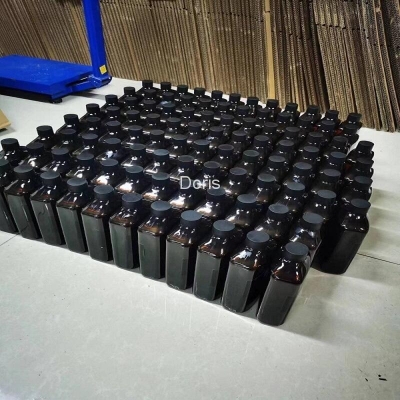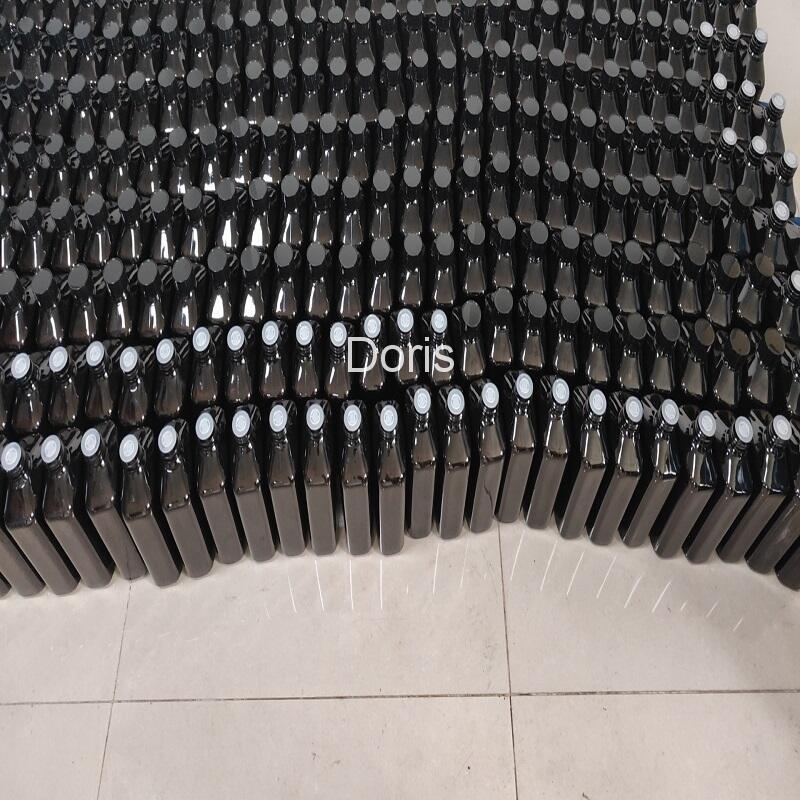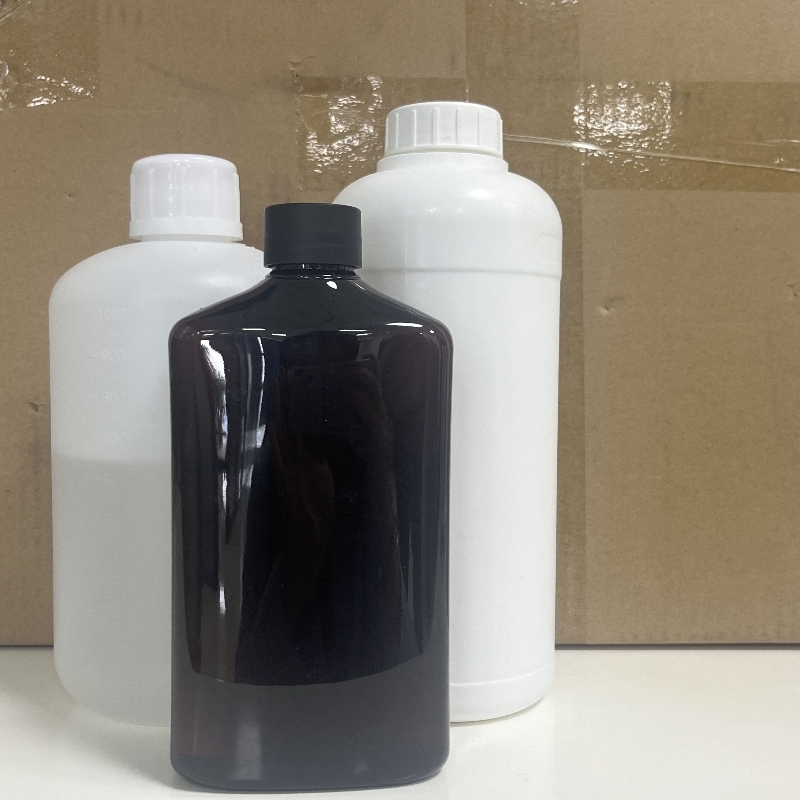Research method of extraction technology of chlorogenic acid in wild chrysanthemum
-
Last Update: 2011-08-03
-
Source: Internet
-
Author: User
Search more information of high quality chemicals, good prices and reliable suppliers, visit
www.echemi.com
Flos Chrysanthemi Indici, also known as chrysanthema and job's tears, is a dry flower head of Chrysanthemum indicum Its nature is bitter and pungent, slightly cold, and it can return to liver and heart meridian It has the function of clearing away heat and detoxifying It is often used in furuncles, carbuncle, red eyes, headache, dizziness and other diseases Chlorogenic acid is one of the main active components in Chrysanthemum indicum It has been reported that chlorogenic acid has antibacterial, antiviral, anti lipid peroxidation and other pharmacological activities, and has a significant pharmacological effect of enhancing gastrointestinal peristalsis and promoting gastric secretion In view of the many physiological activities of chlorogenic acid, it is of great significance to study the chlorogenic acid of Chrysanthemum indicum In order to extract chlorogenic acid effectively and explore the Zui optimization process conditions of extracting chlorogenic acid from Chrysanthemum indicum, two extraction methods of water bath extraction and ultrasonic assisted extraction were investigated to optimize the extraction process of chlorogenic acid from Chrysanthemum indicum, in order to find the best preparation process of Zui 1 instrument and material 1.1 instrument UV / vis916 spectrophotometer (GBC, Australia), zk-82a vacuum drying oven (Shanghai Experimental Instrument General Factory), fz102 miniature plant sample grinder (Huanghua Zhenxing electromechanical instrument factory, Hebei Province), sx8200h desktop ultrasonic cleaner (Shanghai Kedao Ultrasonic Instrument Co., Ltd.), hh-s2 series constant temperature water bath (Jintan Huanyu Scientific Instrument Factory, Jiangsu Province) 。 1.2 the chlorogenic acid standard material was purchased from China Institute of pharmaceutical and biological development and control, the Chrysanthemum indicum was purchased from Bangjian pharmacy (dried at 50 ℃ for 3h, crushed for standby), and other reagents were analytical pure 2 methods and results 2.1 the preparation of the reference solution accurately weigh 5.2mg of chlorogenic acid reference solution and put it into a 250ml volumetric flask, dissolve it with 70% ethanol solution, and get it at a constant volume 2.2 selection of measurement wavelength take 1ml of control solution, put it into 10ml measuring flask, and use 70% ethanol to fix the volume Taking 70% ethanol solution as reference solution, scanning Zui large absorption wavelength in the range of 200-400nm on the UV spectrophotometer, the results showed that there was a large absorption peak of Zui at 329.6nm, so 329.6nm was selected as the measurement wavelength 2.3 methodology study 2.3.1 draw the standard curve accurately and suck 0.0, 0.1, 0.2, 0.3, 0.4, 0.5, 1.0, 2.0, 3.0, 4.0mL of the reference solution into 10 10ml measuring bottles, and fix the volume with 70% ethanol The absorbance was measured at λ = 329.6nm on the UV spectrophotometer The standard curve was drawn with absorbance a as ordinate and chlorogenic acid concentration C as abscissa The linear regression equation is: a = 51.133c-0.0058, r = 0.9997 The results show that chlorogenic acid has a good linear relationship in the range of 0.416-4.576g · L-1 2.3.2 in precision experiment, weigh about 1g of Chrysanthemum indicum, add 10ml to extract it in 70 ℃ water bath for 60min, accurately extract 1ml of the extract, place it in a 10ml measuring flask, and fix the volume with 70% ethanol The absorbance of 70% ethanol was measured The results showed that the precision of the instrument was good 2.3.3 in the stability test, accurately suck 1ml of the extract obtained in "2.3.2", place it in a 10ml measuring flask, and fix the volume with 70% ethanol The absorbance of 70% ethanol was determined in 0, 10, 20, 30, 40, 50 min respectively, six times in succession, RSD = 0.38%, indicating that the extract was stable in 1 h 2.3.4 for the repeatability experiment, weigh accurately 1g of Chrysanthemum indicum powder, prepare three extracts in parallel according to the method of "2.3.2", and conduct the experiment according to the method of "2.3.2", RSD = 0.25%, indicating that the method has good repeatability 2.3.5 sample adding recovery experiment add different amount of chlorogenic acid reference substance to the known content of Chrysanthemum indicum for experiment, use ultraviolet spectrophotometer to determine its absorbance, and get the content of chlorogenic acid The average recovery rate was 100.89%, RSD was 1.45%, which indicated that the recovery rate of the method was good 2.4 orthogonal experimental design [3, 4] 2.4.1 under the same conditions of granularity and extraction process, the factors such as water bath temperature, ethanol concentration, liquid-solid ratio, extraction time, etc were investigated, and L9 (34) orthogonal table was selected to arrange the experiment See Table 1 Table 1 level of factors for water bath extraction (omitted) 2.4.2 under the same conditions of particle size and extraction process, factors such as immersion time, ethanol concentration, liquid-solid ratio and ultrasonic time were investigated, and L9 (34) orthogonal table was selected to arrange the experiment See Table 2 Table 2 factor level of ultrasonic method (omitted) 2.5 determination of Chrysanthemum indicum [5] accurately weigh about 1g of Chrysanthemum indicum, put it in a 100ml round bottom flask, carry out orthogonal experiment according to "2.4", extract the liquid and filter it, transfer the filtrate to a 100ml volumetric flask quantitatively, and fix the volume of 70% ethanol Accurately suck 1ml of filtrate into a 10ml volumetric flask, determine its absorbance according to the standard curve preparation method, and calculate the content of chlorogenic acid from the standard absorption curve The results are shown in Table 3 Table 3 orthogonal experiment scheme and result analysis (omitted) 2.6 analysis of variance from table 3, it can be seen that the best extraction condition of Zui for water bath extraction method is: a3b2c2d1, that is, 70% ethanol with liquid-solid ratio of 12:1 is extracted in water bath at 80 ℃ for 40 min Under these conditions, the content of chlorogenic acid reached 0.35% From the range analysis, we know that the order of the influence of each factor on chlorogenic acid extraction is extraction temperature > liquid-solid ratio > ethanol concentration > extraction time The best extraction conditions of Zui by ultrasonic extraction were: a2b2c2d3, 60% ethanol with liquid-solid ratio of 15:1 for 40 min, ultrasonic extraction for 45 min Under these conditions, the content of chlorogenic acid reached 0.36% From the range analysis, we know that the order of influence of each factor on chlorogenic acid extraction is ethanol concentration > immersion time > ultrasonic time > liquid-solid ratio Conclusion the best extraction condition of Zui by water bath extraction method is that 70% ethanol with liquid-solid ratio of 12:1 is extracted by water bath at 80 ℃ for 40 minutes Under these conditions, the content of chlorogenic acid reached 0.35% The best extraction conditions of Zui by ultrasonic extraction were: the 60% ethanol with liquid-solid ratio of 15:1 was pre impregnated for 40 min, and ultrasonic extraction for 45 min Under these conditions, the content of chlorogenic acid reached 0.36% In the water bath method and ultrasonic method, the main factors affecting the extraction of chlorogenic acid are basically the same, the difference is that the extraction effect of ultrasonic is better than that of water bath The reasons are as follows: ① the destruction of cell membrane by ultrasonic cavitation is helpful to the release and dissolution of chlorogenic acid; ② the ultrasonic wave makes the extractant and extract vibrate continuously, which is helpful to the diffusion of solute; ③ the thermal effect of ultrasonic keeps the temperature of water medium at 60 ℃, which has the effect of water bath for the sample.
This article is an English version of an article which is originally in the Chinese language on echemi.com and is provided for information purposes only.
This website makes no representation or warranty of any kind, either expressed or implied, as to the accuracy, completeness ownership or reliability of
the article or any translations thereof. If you have any concerns or complaints relating to the article, please send an email, providing a detailed
description of the concern or complaint, to
service@echemi.com. A staff member will contact you within 5 working days. Once verified, infringing content
will be removed immediately.







